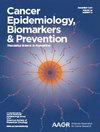Lifetime Body Weight Trajectories and Risk of Kidney Cancer: A Large US Prospective Cohort Study
IF 3.7
3区 医学
Q2 ONCOLOGY
引用次数: 0
Abstract
Purpose: This study aimed to investigate kidney cancer risk in relation to the body mass index (BMI) trajectory and cumulative exposure to excess weight. Methods: We identified several anthropometric metrics to capture the lifetime BMI patterns from the prospective Prostate, Lung, Colorectal, and Ovarian (PLCO) Cancer Screening Trial. These measures included BMI at specific ages (age 20 years, 50 years, and age at completing the baseline questionnaire), BMI trajectory from age 20 to baseline, cumulative exposure to overweight/obesity from age 20 to baseline, and weight change during each age span. The BMI trajectory was identified using the latent class trajectory model. The cumulative exposure, which was quantified by weighted years of living with overweight/obesity (WYO), was obtained by summing up the excess BMI (BMI-25, set to 0 when BMI < 25) across ages. Cox proportional hazards regression, adjusting for age, sex, randomization arm, race, education, smoking, aspirin use, history of hypertension and diabetes, was conducted to quantify the hazard ratio (HR) and 95% confidence interval (CI) for the association between each anthropometric metric and incident kidney cancer. Results: During a median follow-up of 11.5 years, incident kidney cancers were diagnosed in 391 men and 223 women. A higher BMI at age 20, 50, and baseline was associated with a greater hazard of kidney cancer. Compared to individuals who retained normal BMI throughout adulthood, an increased hazard of kidney cancer was observed for individuals who progressed from normal BMI to overweight (HR: 1.41, 95% CI: 1.15,1.73), from normal BMI to obesity (HR: 2.02, 95% CI: 1.57, 2.58), and from overweight to obesity (HR: 2.79, 95% CI: 1.88,4.13). Compared to individuals who were never overweight (WYO = 0), elevated HRs were observed among individuals who experienced low (HR: 1.22, 95% CI: 0.94, 1.57), medium (HR: 1.46, 95% CI: 1.15,1.87), and high (HR: 1.92, 95% CI: 1.51, 2.43) level of WYO (tertiles of WYO above 0). Weight gain of ≥10 kg was positively associated with kidney cancer incidence for each age span. Conclusions: Being overweight in early adulthood, weight gain in later life, and higher cumulative exposure to excess weight over the lifespan were all associated with increased risk of kidney cancer.终生体重轨迹与肾癌风险:美国大型前瞻性队列研究
目的:本研究旨在调查肾癌风险与体重指数(BMI)轨迹和超重累积暴露的关系。研究方法我们从前瞻性的前列腺癌、肺癌、结直肠癌和卵巢癌(PLCO)筛查试验中确定了几种人体测量指标来捕捉终生体重指数模式。这些指标包括特定年龄段(20 岁、50 岁和完成基线问卷时的年龄)的 BMI、从 20 岁到基线的 BMI 轨迹、从 20 岁到基线的超重/肥胖累积暴露以及每个年龄段的体重变化。体重指数轨迹是通过潜类轨迹模型确定的。累计暴露量通过加权超重/肥胖生活年限(WYO)进行量化,由各年龄段的超重BMI(BMI-25,当BMI<25时设为0)相加得出。在对年龄、性别、随机分组、种族、教育程度、吸烟、阿司匹林使用情况、高血压和糖尿病史进行调整后,进行了 Cox 比例危险度回归,以量化各人体测量指标与肾癌发病率之间的危险度比 (HR) 和 95% 置信区间 (CI)。结果显示在中位 11.5 年的随访期间,391 名男性和 223 名女性被诊断为肾癌。20岁、50岁和基线时体重指数越高,患肾癌的风险越大。与在整个成年期保持正常体重指数的人相比,从正常体重指数发展到超重(HR:1.41,95% CI:1.15,1.73)、从正常体重指数发展到肥胖(HR:2.02,95% CI:1.57,2.58)以及从超重发展到肥胖(HR:2.79,95% CI:1.88,4.13)的人患肾癌的风险增加。与从未超重(WYO = 0)的人相比,在经历过低度(HR:1.22,95% CI:0.94,1.57)、中度(HR:1.46,95% CI:1.15,1.87)和高度(HR:1.92,95% CI:1.51,2.43)WYO 的人中(WYO 超过 0 的三等分位数)观察到较高的 HRs。在每个年龄段,体重增加≥10 千克与肾癌发病率呈正相关。结论是成年早期体重超重、晚年体重增加以及在整个生命周期中较高的超重累积暴露均与肾癌风险增加有关。
本文章由计算机程序翻译,如有差异,请以英文原文为准。
求助全文
约1分钟内获得全文
求助全文
来源期刊

Cancer Epidemiology Biomarkers & Prevention
医学-公共卫生、环境卫生与职业卫生
CiteScore
6.50
自引率
2.60%
发文量
538
审稿时长
1.6 months
期刊介绍:
Cancer Epidemiology, Biomarkers & Prevention publishes original peer-reviewed, population-based research on cancer etiology, prevention, surveillance, and survivorship. The following topics are of special interest: descriptive, analytical, and molecular epidemiology; biomarkers including assay development, validation, and application; chemoprevention and other types of prevention research in the context of descriptive and observational studies; the role of behavioral factors in cancer etiology and prevention; survivorship studies; risk factors; implementation science and cancer care delivery; and the science of cancer health disparities. Besides welcoming manuscripts that address individual subjects in any of the relevant disciplines, CEBP editors encourage the submission of manuscripts with a transdisciplinary approach.
文献相关原料
| 公司名称 | 产品信息 | 采购帮参考价格 |
|---|
 求助内容:
求助内容: 应助结果提醒方式:
应助结果提醒方式:


